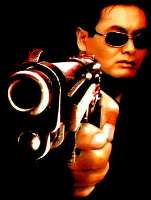
During my first year in Taiwan, with my Chinese skills at a bare minimum, I found it frustrating to constantly be in situations where I couldn’t understand what people were saying around me, or to me. That’s when I learned a neat trick to get myself more involved – guessing! I began to recognize patterns in what I was hearing around me, and began to build around that.
I first learned how to recognize subjects – “I”, “you”, “he / she” etc. I then learned how to recognize questions – “….ma?” along with the key question words “what”, “which”, “where”, “who” etc. After that, it just became a game of fill in the blanks. I might be in an elevator when someone asks “you… where…?” I would instantly reply “Jiānádà” (Canada). The gleam on their face told me that I had answered their question of where I was from correctly!
Later, as my vocabulary began to increase, I began to recognize key verbs. I would walk into a McDonalds and point at what I wanted to order. The cashier would then ask me a question (you want…?) . In the early stages, this was a pure guessing game. I would quickly rack my brain trying to think what questions I would get asked when ordering fast food in Canada. “What do you want to drink?” –
Got it! I would then point at the drink I wanted (this time it was me who had the gleam, as she poured the drink I wanted). Next question just before payment – “you want… or…?” I was already waiting for her to ask if I was planning to dine in or take out, so I quickly pointed at the ground to indicate wanting to dine in.
This was a great confidence booster for me to be able to function this way. Well, until I ran into a cashier one day who asked “you want…” followed by some new words I hadn’t heard before. My confident demeanor vanished in an instance. Was this a new way of asking if I wanted to eat in? I tried pointing at the ground, but could tell by her confused look that I wasn’t even close. (It turns out that she had the nerve to ask me if I wanted to upsize my fries and drink!)
I realized then that I had to increase my vocabulary to increase my guessing odds. But how could I forecast what questions and what new vocabulary someone was going to throw at me next time? I decided to play the odds again.
Over time, I began to pick out words that I would hear repeated in these different questions. I figured that if I heard a word being used repeatedly, that meant there was a greater chance it would be used again in the future, so it was in my interest to find out what it meant. After finding out that “hē” meant “to drink,” I was a lot more confident answering “you want drink what?” than answering “you want… what?”
This is the same concept used in the CLO course. Certain words get introduced in lessons and are never brought up again, so you are probably less likely to remember them. Other words get introduced, and then are later brought up again in future lessons.
Learning the more frequently used words first allows you to set the context to “guess” the meaning of the remaining words. You may notice this approach in the explanation portion of the lessons too. We first listen to a conversation without translating, then pick out the words we do know to help us figure out what’s remaining.
Developing this technique can be valuable in improving your listening skills.




